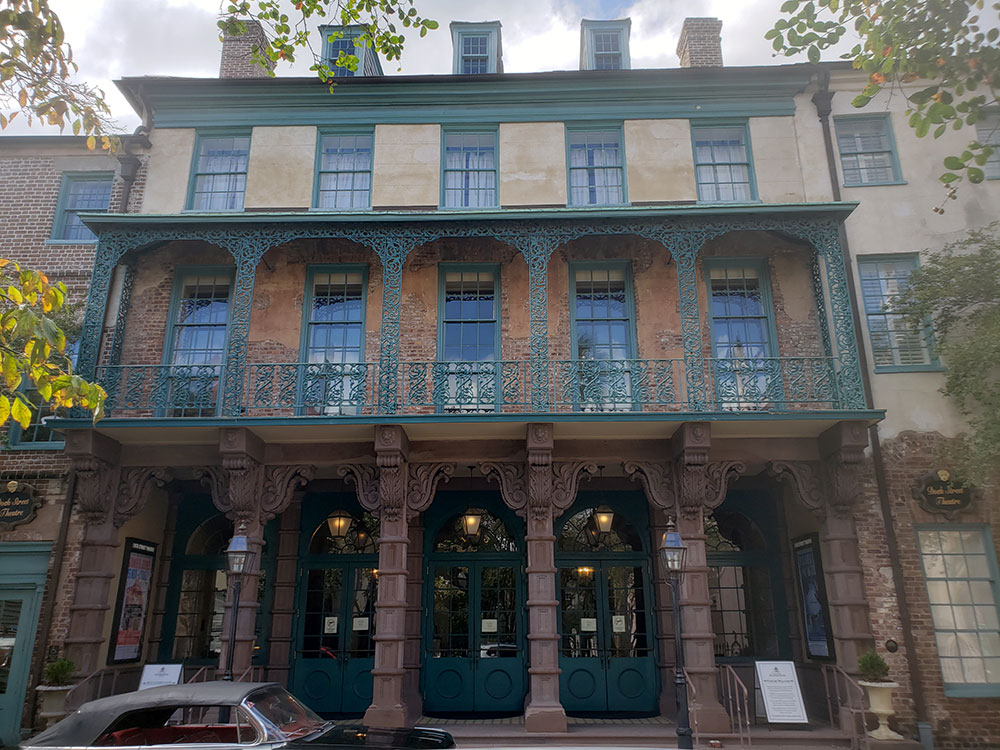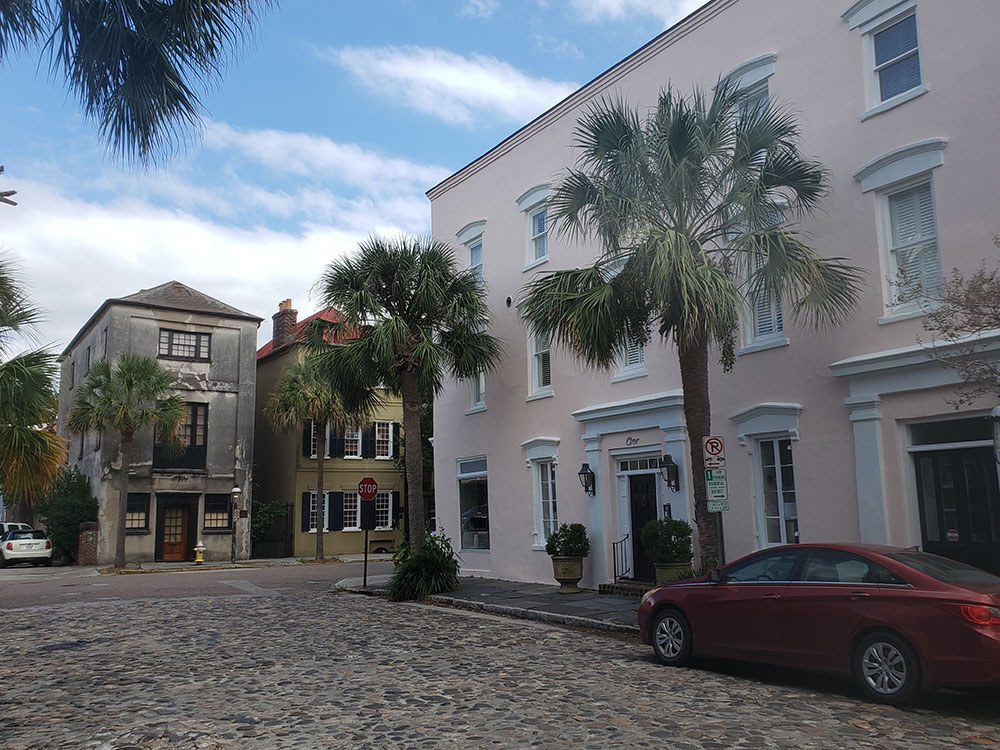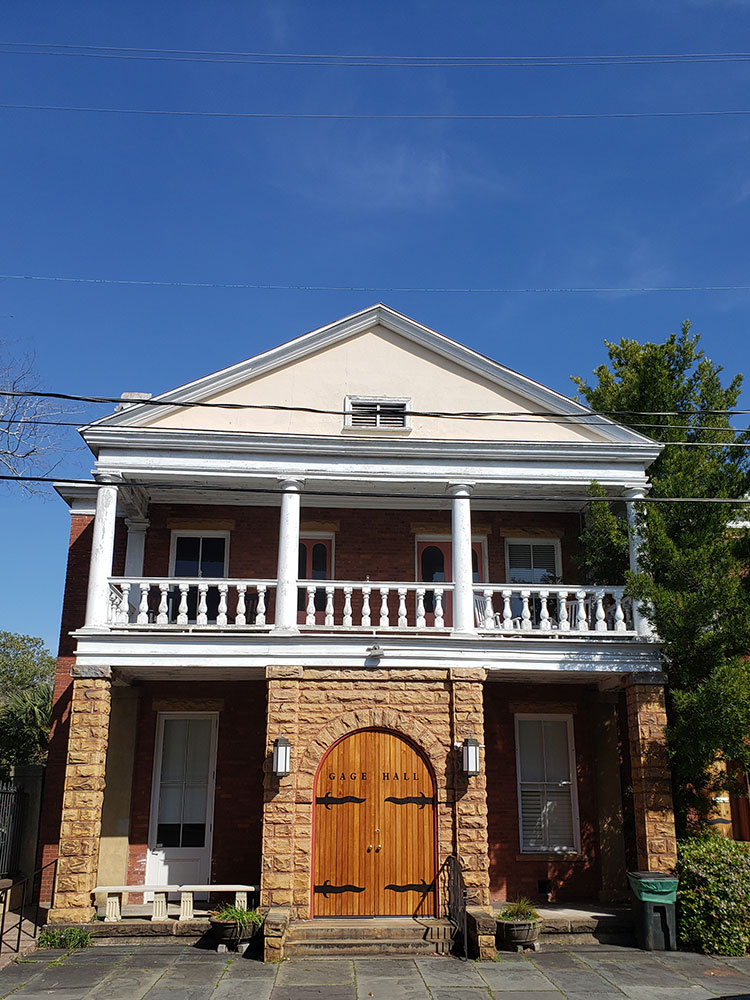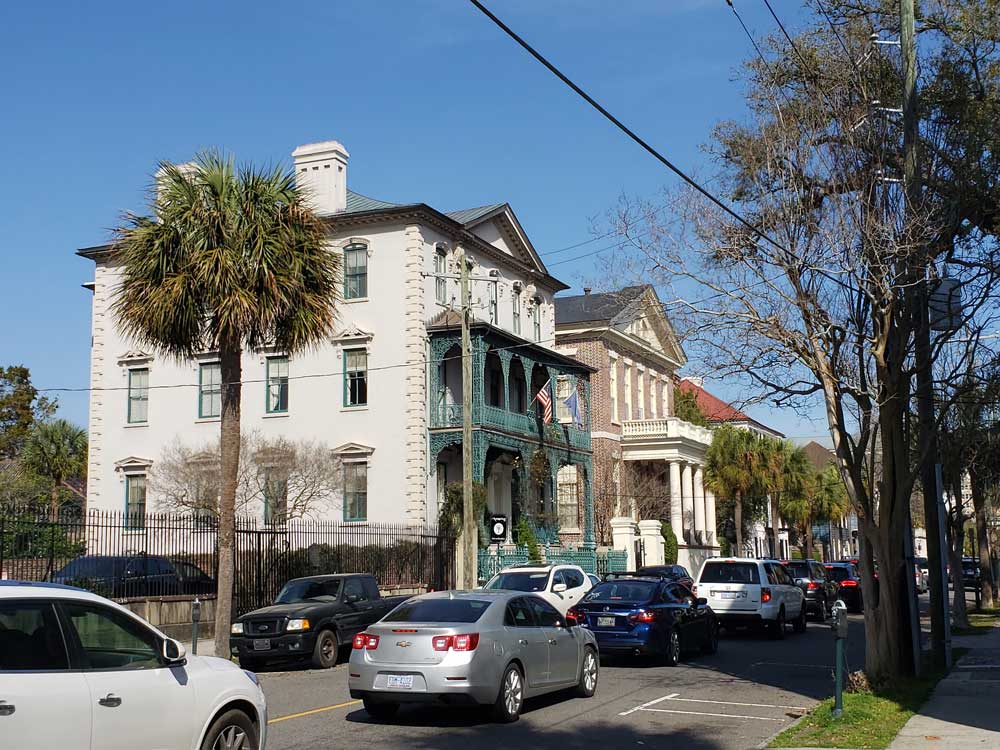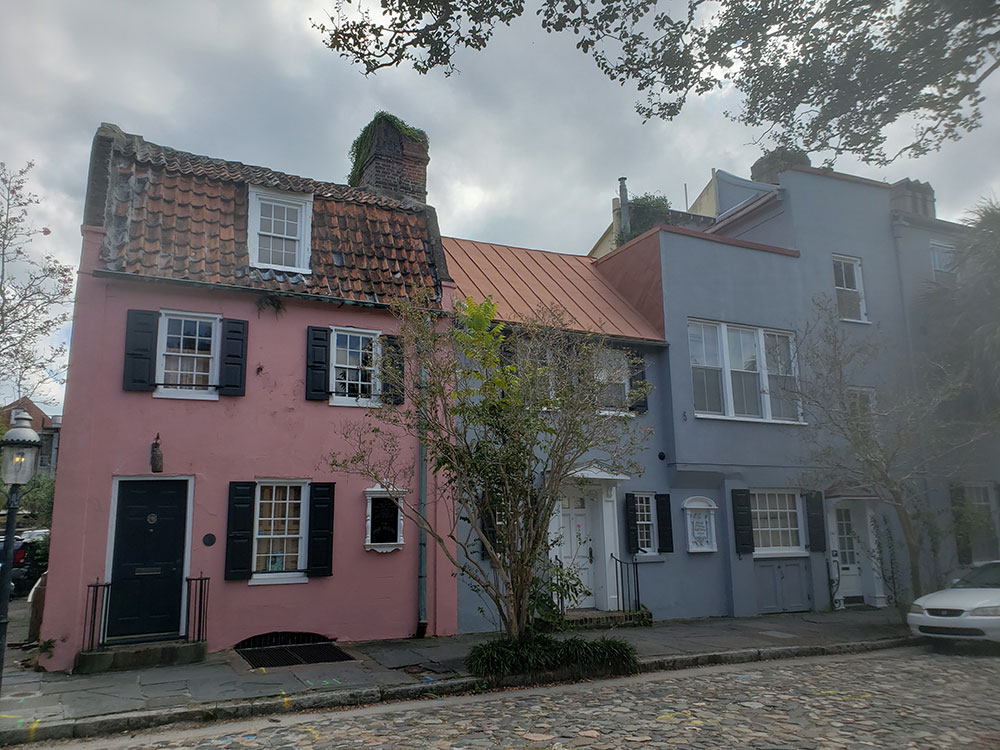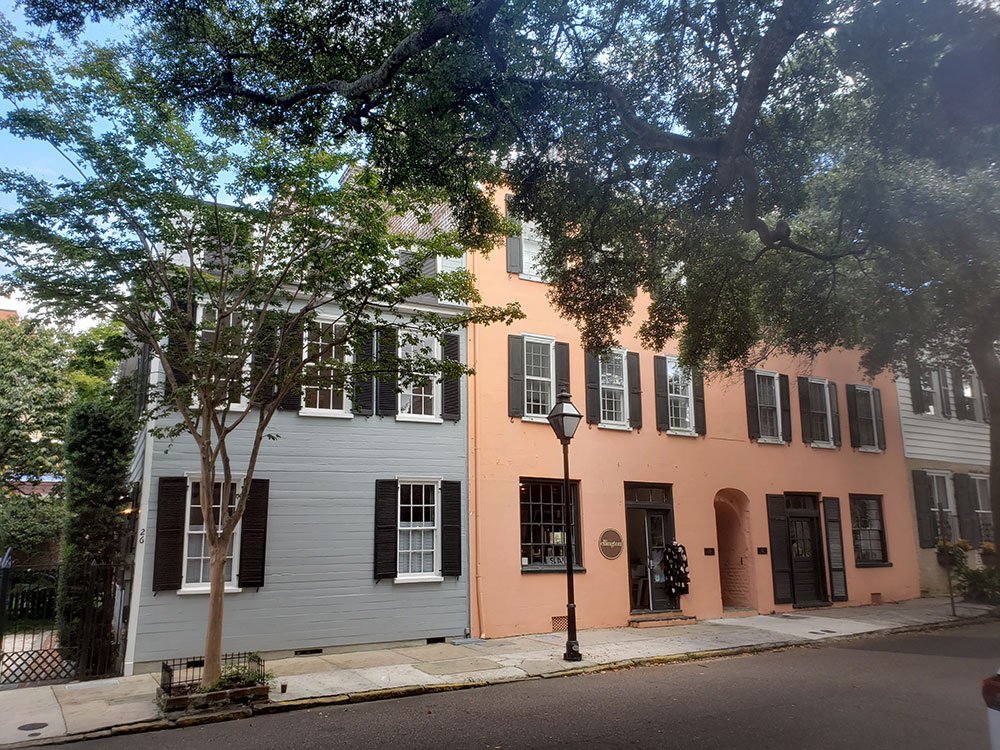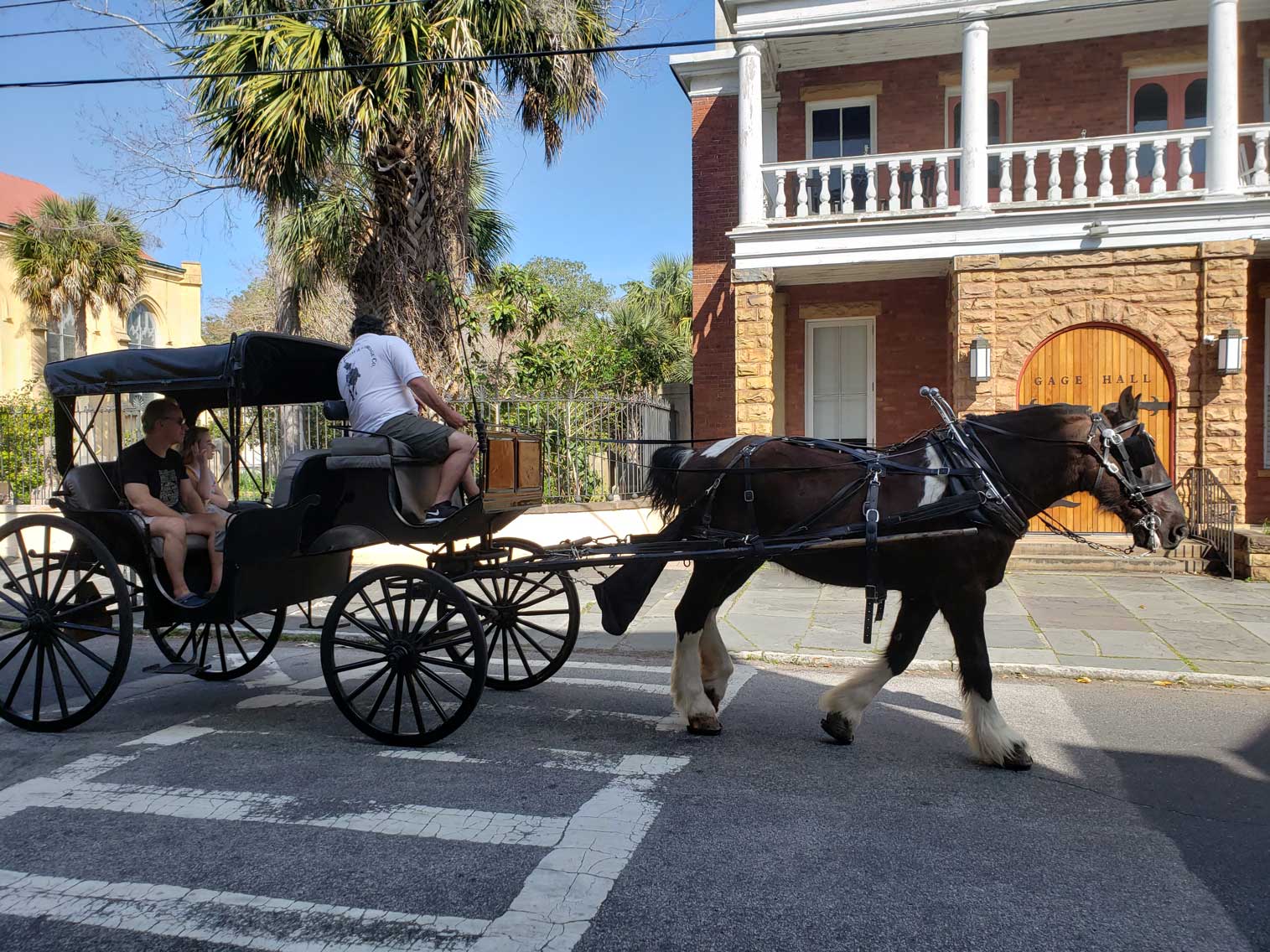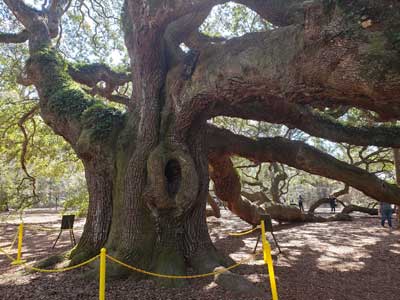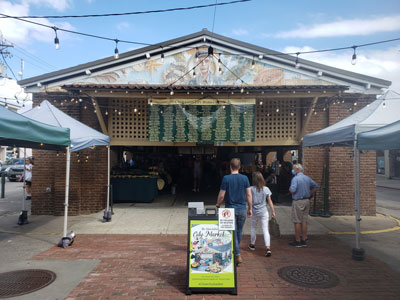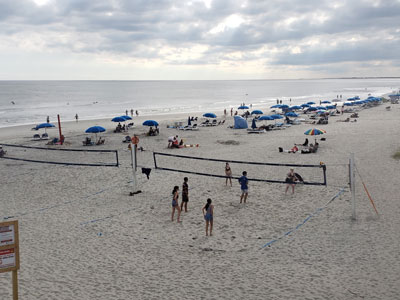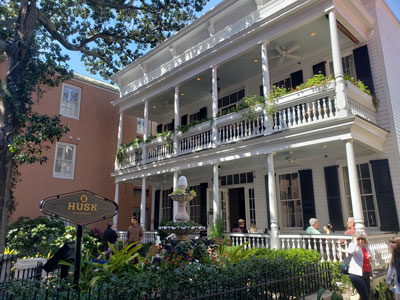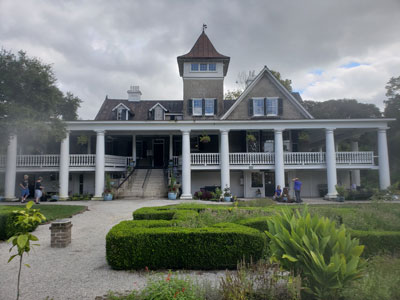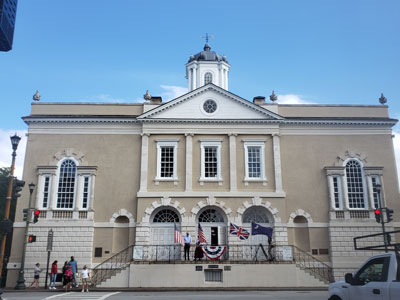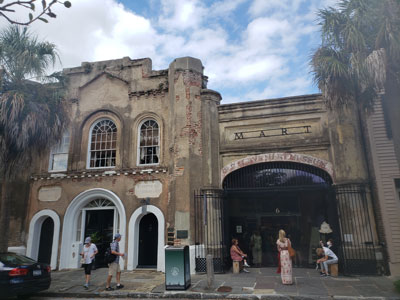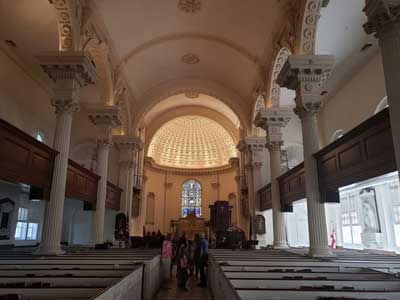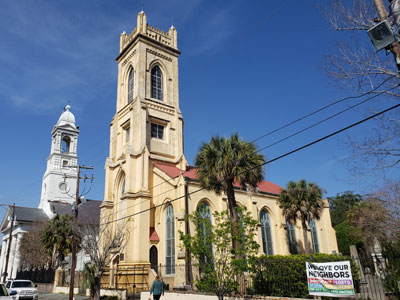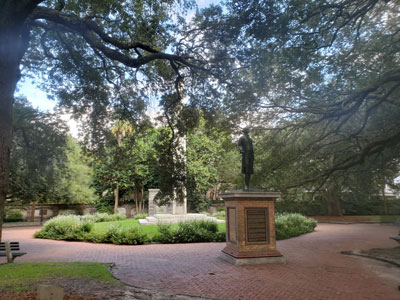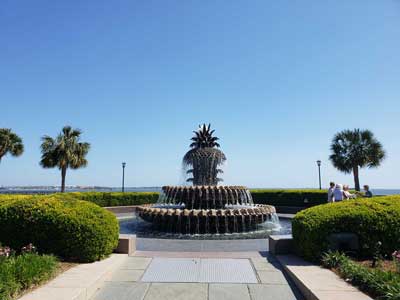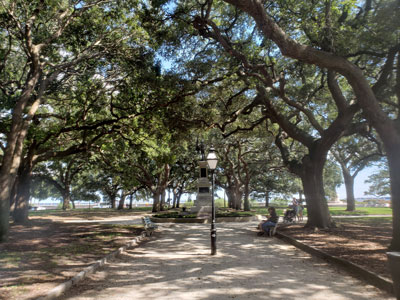Charleston, SC Travel Guide
Places to See in Charleston, SC
Angel Oak Tree
Southern live oak estimated to be 400-500 years old, standing 66.5 ft tall
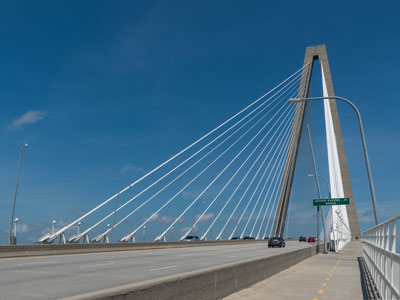
DXR, CC BY-SA 4.0, via Wikimedia Commons; Image Size Adjusted
Arthur Ravenel Jr. Bridge
Cable-stayed bridge connecting with a main span of 1,546 feet (471 m), the third longest among cable-stayed bridges in the Western Hemisphere
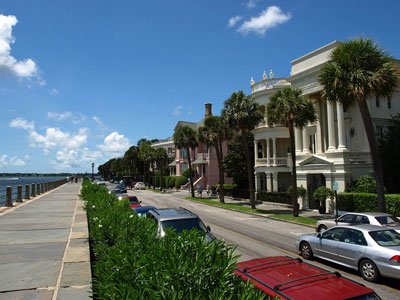
Chris Pruitt, CC BY-SA 3.0, via Wikimedia Commons; Image Size Adjusted
The Battery
Landmark defensive seawall & promenade, lined by stately antebellum homes & historical monuments.
-400.jpg)
Warren LeMay from Covington, KY, United States, CC0, via Wikimedia Commons; Image Size Adjusted
Cathedral of Saint John the Baptist
Mother church of the Roman Catholic Diocese of Charleston, designed in the Gothic Revival style
_at_Charles_Towne_Landing,_South_Carolina-400.jpg)
The ed17, CC BY-SA 4.0, via Wikimedia Commons; Image Size Adjusted
Charles Towne Landing State Historic Site
Preserves the original site of the first permanent English settlement in South Carolina
City Market
Historic market complex in downtown Charleston established in the 1790s
-400.jpg)
Warren LeMay from Covington, KY, United States, CC0, via Wikimedia Commons; Image Size Adjusted
Fireproof Building
Completed in 1827, is believed to be the oldest fire-resistant building in America today
Folly Beach
Home to numerous surf spots and an eclectic beach community with surf shops, restaurants, gift shops, offices, and bars
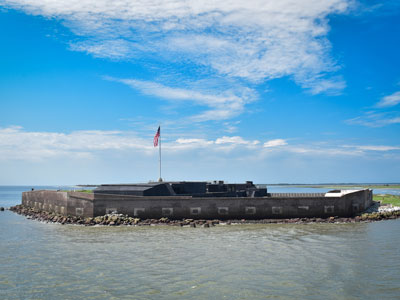
Clynnwersch, CC BY-SA 4.0, via Wikimedia Commons; Image Size Adjusted
Fort Sumter and Fort Moultrie National Historical Park
Historical park protects Fort Sumter, known for the location of the Battle of Fort Sumter that began the American Civil War
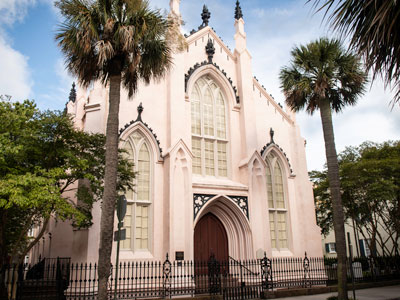
Andrea Kennedy (owner of Fernweh Travel Images), CC BY-SA 4.0, via Wikimedia Commons; Image Size Adjusted
French Huguenot Church
Built in 1844 and designed by architect Edward Brickell White, it is the oldest Gothic Revival church in South Carolina
Magnolia Plantation and Gardens
Historic house with gardens located on the Ashley River is one of the oldest plantations in the South
Old Exchange & Provost Dungeon
Historic building built in 1767-1771 has served notably as a prisoner of war facility operated by British forces during the American Revolutionary War
Old Slave Mart Museum
Building in Charleston that once housed an antebellum slave auction gallery that today houses the Old Slave Mart Museum
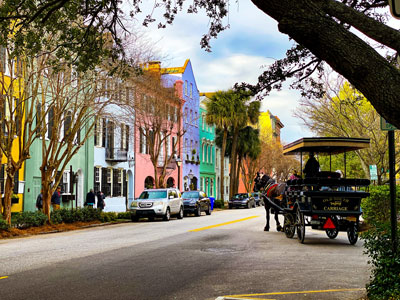
Photo by Leonel Heisenberg on Unsplash; Image Size Adjusted
Rainbow Row
Historic District cluster of 13 pastel-painted Georgian-style rowhouses dating from 1748 to 1845
St. Philip's Church
Oldest European-American religious congregation in South Carolina
Unitarian Church in Charleston
Oldest Unitarian church in the South and the second oldest church building on the peninsula of Charleston
Washington Square
Urban park with oak trees & flower displays centered on a 42-ft. model of the Washington Monument
Waterfront Park
Well-known park with water views plus a large lawn, walkways & 2 fountains
White Point Garden
Public garden beside the water offers paved paths, military statues, canons & picnic areas.
Charleston is the largest city in South Carolina. Charleston was founded in 1670 as Charles Town, honoring King Charles II, at Albemarle Point on the west bank of the Ashley River (now Charles Towne Landing) but relocated in 1680 to its present site, which became the fifth-largest city in North America within ten years.
Charleston's significance in American history is tied to its role as a major slave trading port. Charleston slave traders like Joseph Wragg were the first to break through the monopoly of the Royal African Company and pioneered the large-scale slave trade of the 18th century; almost one half of slaves imported to the United States arrived in Charleston. In 2018, the city formally apologized for its role in the American Slave trade after CNN noted that slavery "riddles the history" of Charleston.
The city proper consists of six distinct districts:
- Downtown, or sometimes referred to as "The Peninsula", is Charleston's center city separated by the Ashley River to the west and the Cooper River to the east.
- West Ashley, residential area to the west of Downtown bordered by the Ashley River to the east and the Stono River to the west.
- Johns Island, far western limits of Charleston home to the Angel Oak, bordered by the Stono River to the east, Kiawah River to the south and Wadmalaw Island to the west.
- James Island, popular residential area between Downtown and the town of Folly Beach where the McLeod Plantation is located.
- Cainhoy Peninsula, far eastern limits of Charleston bordered by the Wando River to the west and Nowell Creek to the east.
- Daniel Island, residential area to the north of downtown, east of the Cooper River and west of the Wando River.
Charleston's culture blends traditional Southern U.S., English, French, and West African elements. The downtown peninsula has a number of art, music, local cuisine, and fashion venues.
Charleston is known for its local seafood, which plays a key role in the city's renowned cuisine, comprising staple dishes such as gumbo, she-crab soup, fried oysters, Lowcountry boil, deviled crab cakes, red rice, and shrimp and grits. Rice is the staple in many dishes, reflecting the rice culture of the Low Country. The cuisine in Charleston is also strongly influenced by British and French elements.
Charleston has many historic buildings, art and historical museums, public parks, and other attractions, including:
- Halsey Institute of Contemporary Art at the College of Charleston is free a non-collecting contemporary arts organization.
- The Calhoun Mansion, a 24,000-square-foot, 1876 Victorian home at 16 Meeting Street, is named for a grandson of John C. Calhoun who lived there with his wife, the builder's daughter. The private house is periodically open for tours.
- The Charleston Museum, America's first museum, was founded in 1773.
- The Exchange and Provost was built in 1767. It is operated as a museum by the Daughters of the American Revolution.
- The Powder Magazine is a 1713 gunpowder magazine and museum. It is the oldest surviving public building in South Carolina.
- The Gibbes Museum of Art, opened in 1905, houses principally American works with a Charleston or Southern connection.
- The Fireproof Building houses the South Carolina Historical Society which has a rotating series of historical displays.
- The Nathaniel Russell House is an important federal-style house open to the public as a house museum.
- The Gov. William Aiken House, also known as the Aiken-Rhett House, is a house museum built in 1820.
- The Heyward-Washington House is a historic house museum owned and operated by the Charleston Museum. Furnished for the late 18th century, the house includes a collection of Charleston-made furniture.
- The Joseph Manigault House is a historic house museum owned and operated by the Charleston Museum. The house was designed by Gabriel Manigault and is significant for its Adam style architecture.
- The Market Hall and Sheds, also known as the City Market or simply the Market, stretch several blocks behind 188 Meeting Street. Market Hall was built in the 1841 and houses the Daughters of the Confederacy Museum. The sheds house some permanent stores, but are mainly occupied by open-air vendors.
- The Avery Research Center for African American History and Culture was established to collect, preserve, and make public the unique historical and cultural heritage of African Americans in Charleston and the South Carolina Low Country. Avery's archival collections, museum exhibitions, and public programming reflect these diverse populations, as well as the wider African Diaspora.
- Fort Sumter, site of the first shots fired in the Civil War, is located in Charleston Harbor. The National Park Service maintains a visitor center for Fort Sumter at Liberty Square (near the South Carolina Aquarium), and boat tours including the fort depart nearby.
- The Battery is an historic defensive seawall and promenade located at the tip of the peninsula along with White Point Garden, a park featuring several memorials and Civil War-era artillery pieces.
- Rainbow Row is an iconic strip of homes along the harbor that date back to the mid-18th century. Though the homes are not open to the public, they are one of the most photographed attractions in the city and are featured heavily in local art.
- The South Carolina Aquarium includes revolving exhibits while its permanent focus is on the aquatic life of South Carolina.
- Waterfront Park located on the Cooper River.
- Old Slave Mart museum - Located at 6 Chalmers St in the historic district is the first African American Museum. It has operated since 1938.
Charleston is a popular tourist destination and a notable art destination, named a top-25 arts destination by AmericanStyle magazine. It has been named "America's Most Friendly [City]" by Travel + Leisure in 2011, 2013, and 2014 by Condé Nast Traveler, and also "the most polite and hospitable city in America" by Southern Living magazine. In 2016, Charleston was ranked the "World's Best City" by Travel + Leisure.
Commercial shipping is important to the economy. The city has two shipping terminals, of a total of five terminals owned and operated by the South Carolina Ports Authority in the Charleston metropolitan area, which are part of the fourth-largest container seaport on the East Coast and the seventh-largest container seaport in the United States.
The Arthur Ravenel Jr. Bridge across the Cooper River opened on July 16, 2005, and was the longest cable-stayed bridge in the Americas at the time of its construction. The bridge links downtown Charleston with Mount Pleasant, and has eight lanes plus a 12-foot lane shared by pedestrians and bicycles. The height of the bridge varies, but it is estimated that it has a height of 573 feet. It replaced the Grace Memorial Bridge (built in 1929) and the Silas N. Pearman Bridge (built in 1966).
This article uses material from the Wikipedia article "Charleston, South Carolina", which is released under the Creative Commons Attribution-Share-Alike License 3.0
